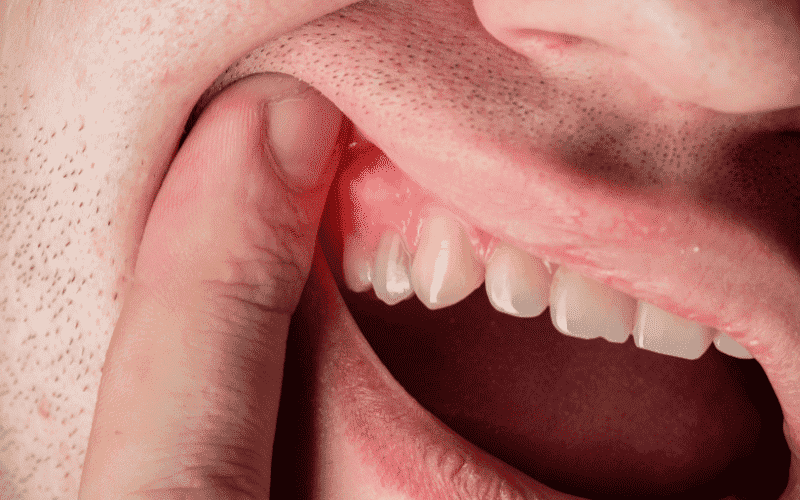ONLINE SCHEDULING AND VIRTUAL CONSULTS AVAILABLE

Is a Black Tooth a Dental Emergency? What to Do If You Notice This Change?

A black tooth can be startling and raise immediate concerns about your dental health. This discoloration often signals underlying issues that need prompt attention. Whether it’s caused by decay, trauma, or an internal problem, understanding why a tooth turns black is crucial for addressing the issue effectively.
Ignoring a black tooth can lead to more severe problems if left untreated. From the potential for worsening decay to complications from trauma, knowing how to respond can make a significant difference in your dental well-being.
In this blog, we’ll explore what might cause a tooth to turn black, when you should consider it a dental emergency, and the steps to take if you notice this change. We’ll also discuss treatment options and preventive measures to keep your teeth healthy and vibrant.
Let’s dive into the essential information you need to handle this dental concern effectively.
What Are the Causes of a Black Tooth?
Understanding the reasons behind a black tooth is crucial for proper treatment. Several factors can cause this discoloration, each indicating different underlying issues.
Tooth Decay
Tooth decay is a leading cause of tooth discoloration. As bacteria break down sugars, they produce acids that erode the tooth enamel, leading to cavities. If decay progresses, it can cause the tooth to darken, turning it black.
- Enamel Erosion: As enamel wears away, the dentin beneath may show through, often appearing darker.
- Cavity Formation: Deep cavities can turn black as the decay spreads and the tooth structure deteriorates.
Trauma or Injury
Physical trauma, such as a knock to the mouth or a fall, can cause a tooth to change color. The impact may damage the internal blood vessels of the tooth, leading to discoloration.
- Internal Bleeding: Injury can cause internal bleeding within the tooth, resulting in a blackened appearance.
- Tooth Fractures: Cracks and fractures can disrupt the tooth’s internal structure, leading to discoloration.
Internal Bleeding or Infection
Internal bleeding or infection can cause a tooth to turn black. Conditions like pulp necrosis (death of the tooth’s nerve) can darken the tooth’s color.
- Pulp Necrosis: When the tooth’s nerve dies, it can lead to blackening as the tissue inside decays.
- Abscess Formation: An infection that leads to an abscess can also cause the tooth to darken.
Dental Fillings or Restorations
Certain dental materials, especially older fillings, can discolor over time. These materials may react with the tooth or degrade, causing a blackened appearance.
- Old Fillings: Silver amalgam fillings can tarnish and affect the tooth’s color.
- Restoration Issues: Some restorations may react with the natural tooth, causing a blackish tint.
When to Consider a Black Tooth a Dental Emergency?
Identifying whether a black tooth is a dental emergency can be crucial for timely and effective treatment. Understanding the signs and differentiating between urgent and non-urgent situations can help you address the issue properly.
Signs of Serious Issues
- Pain: Persistent or severe toothache often indicates that the underlying problem is serious and requires immediate attention.
- Swelling: Any swelling around the affected tooth could suggest an infection or abscess, which needs urgent care.
- Sensitivity: Increased sensitivity to hot or cold could be a sign of nerve damage or other significant issues.
Differences Between Non-Urgent and Urgent Cases
- Non-Urgent Cases: If the tooth is black but you experience no pain, swelling, or sensitivity, it might not require immediate action. However, you should still schedule a dental appointment to assess the condition.
- Urgent Cases: When combined with symptoms like severe pain, swelling, or fever, a black tooth becomes a dental emergency. Immediate attention from an emergency dentist in Plantation is essential to prevent further complications and manage the underlying cause effectively.
Immediate Steps to Take
If You Notice a Black Tooth
- Schedule an Appointment: Contact your dentist as soon as possible. Early evaluation is crucial to determine the cause and necessary treatment.
- Avoid Aggravating Factors: Refrain from consuming very hot, cold, or acidic foods and drinks to prevent further discomfort.
Managing Pain and Discomfort
- Over-the-Counter Pain Relievers: Use medications like ibuprofen or acetaminophen to manage pain. Follow the dosage instructions on the package.
- Cold Compress: Apply a cold compress to the outside of your mouth near the affected area to reduce swelling and numb the pain.
- Saltwater Rinse: Rinse your mouth with warm salt water to help soothe the area and reduce inflammation.
Professional Diagnosis and Treatment Options
Diagnostic Procedures
- Visual Examination: Your dentist will inspect the tooth and surrounding area for signs of decay or trauma.
- X-Rays: Radiographs help identify underlying issues like internal decay, infections, or damage that’s not visible to the naked eye.
- Pulp Testing: This assesses the health of the tooth’s nerve and pulp to determine if internal damage has occurred.
Treatment Plans
- Dental Fillings or Crowns: For decay, the dentist may clean out the affected area and use fillings or crowns to restore the tooth.
- Root Canal Therapy: If the decay has reached the pulp, a root canal might be necessary to remove the infected tissue and seal the tooth.
- Tooth Extraction: In severe cases where the tooth is beyond repair, extraction may be the best option.
A black tooth can signal various dental issues, from decay to trauma. Acting promptly can make a significant difference in treatment outcomes. If you notice a black tooth, assess the severity, manage any discomfort, and consult a dental professional for an accurate diagnosis. Remember, addressing these changes early can prevent more serious complications and help preserve your oral health. Don’t hesitate to seek professional help if you’re unsure about the severity or cause of the discoloration.




